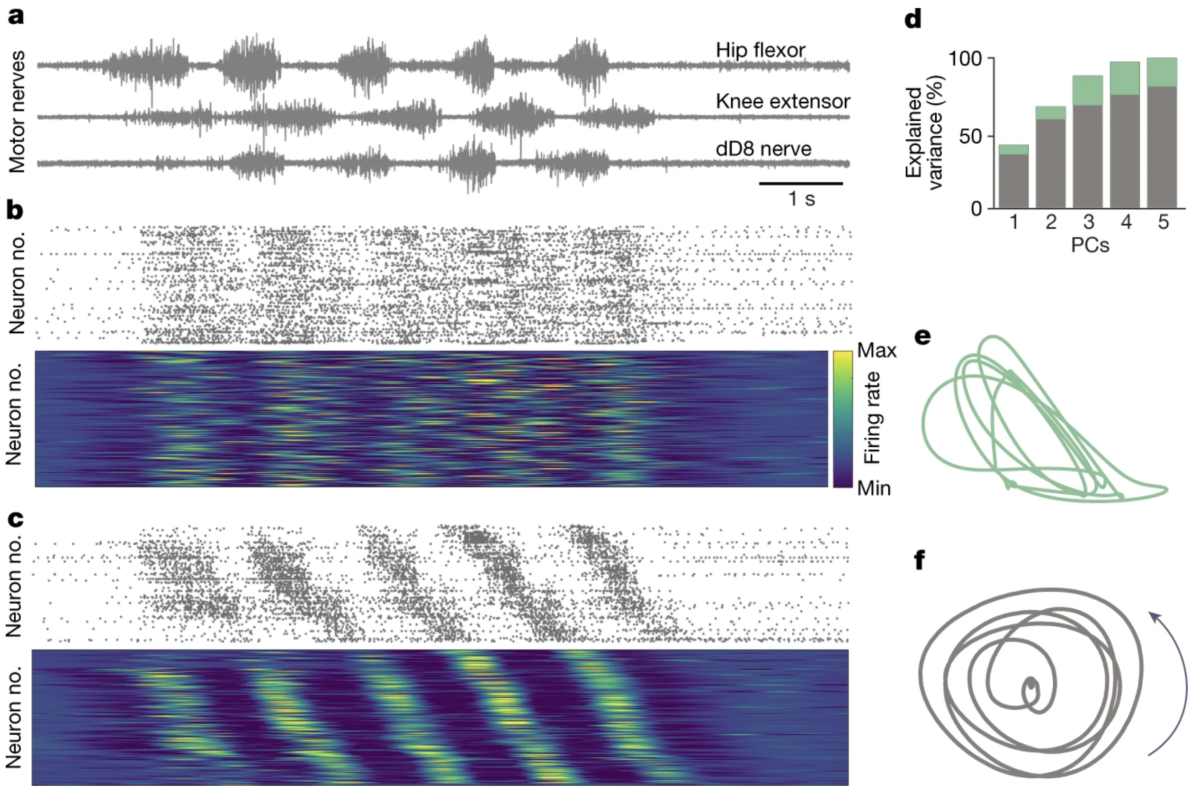Although the generation of movements is a fundamental function of the nervous system, the underlying neural principles remain unclear. As flexor and extensor muscle activities alternate during rhythmic movements such as walking, it is often assumed that the responsible neural circuitry is similarly exhibiting alternating activity1. Here we present ensemble recordings of neurons in the lumbar spinal cord that indicate that, rather than alternating, the population is performing a low-dimensional ‘rotation’ in neural space, in which the neural activity is cycling through all phases continuously during the rhythmic behaviour. The radius of rotation correlates with the intended muscle force, and a perturbation of the low-dimensional trajectory can modify the motor behaviour. As existing models of spinal motor control do not offer an adequate explanation of rotation1,2, we propose a theory of neural generation of movements from which this and other unresolved issues, such as speed regulation, force control and multifunctionalism, are readily explained.
Henrik Linden, Peter C. Petersen, Mikkel Vestergaard, Rune W. Berg. “Movement is governed by rotational population dynamics in spinal motor networks”. Nature, October 12, 2022. [pdf] [link]





